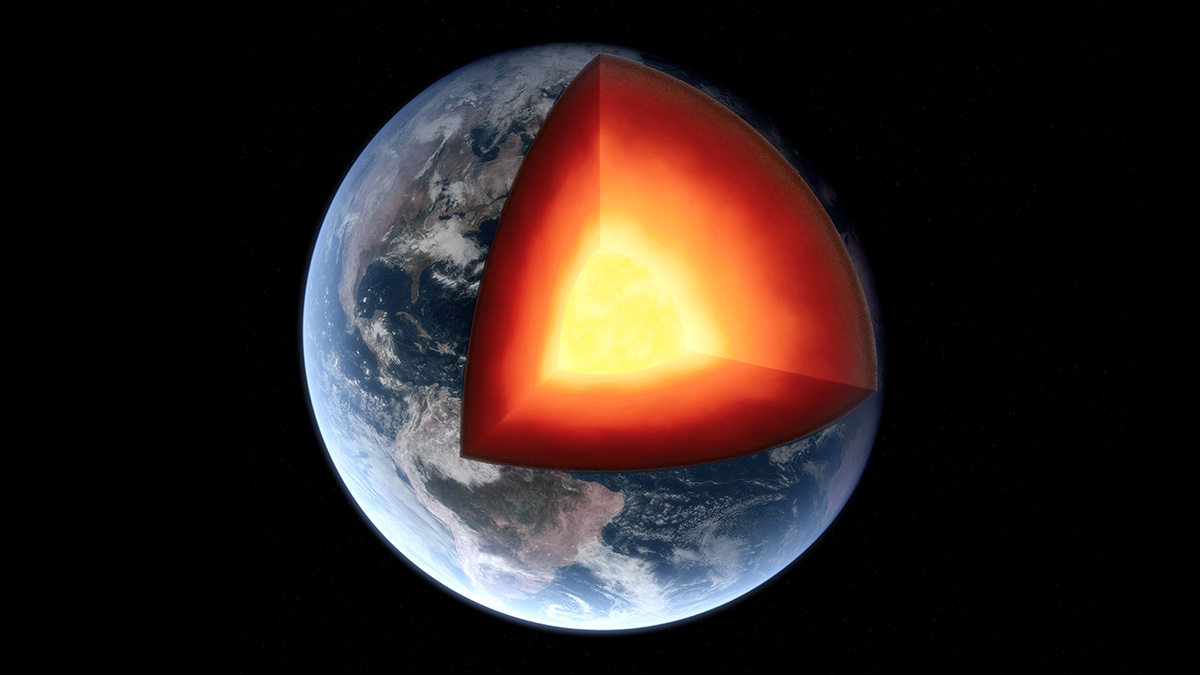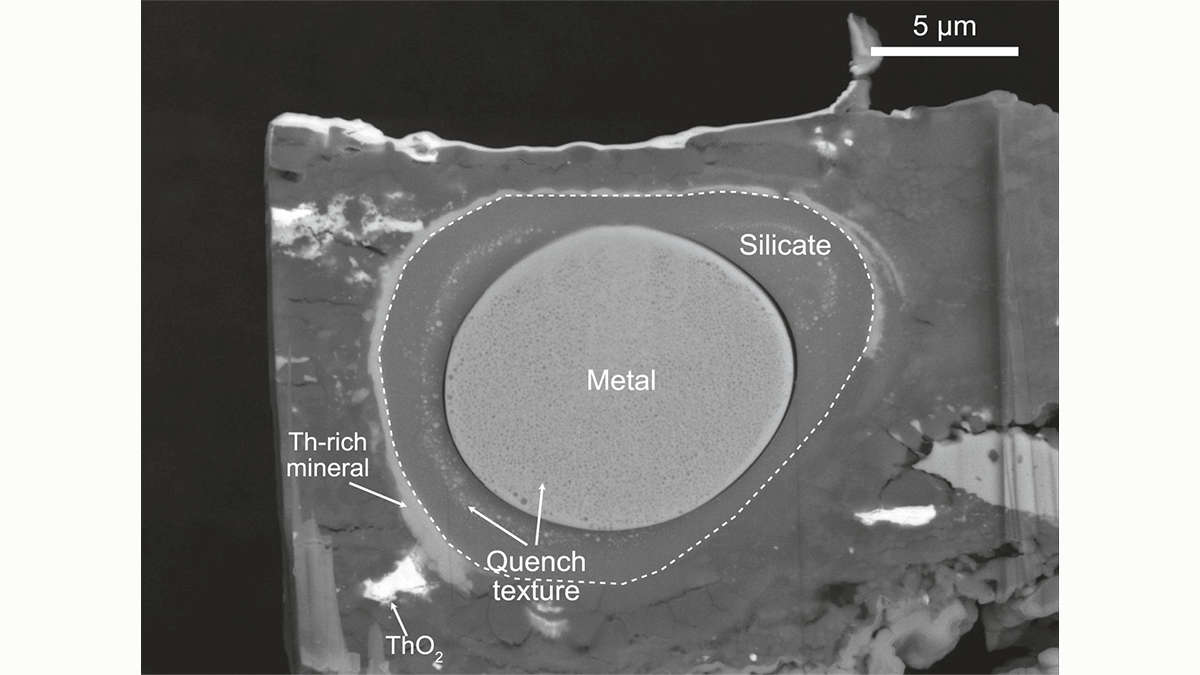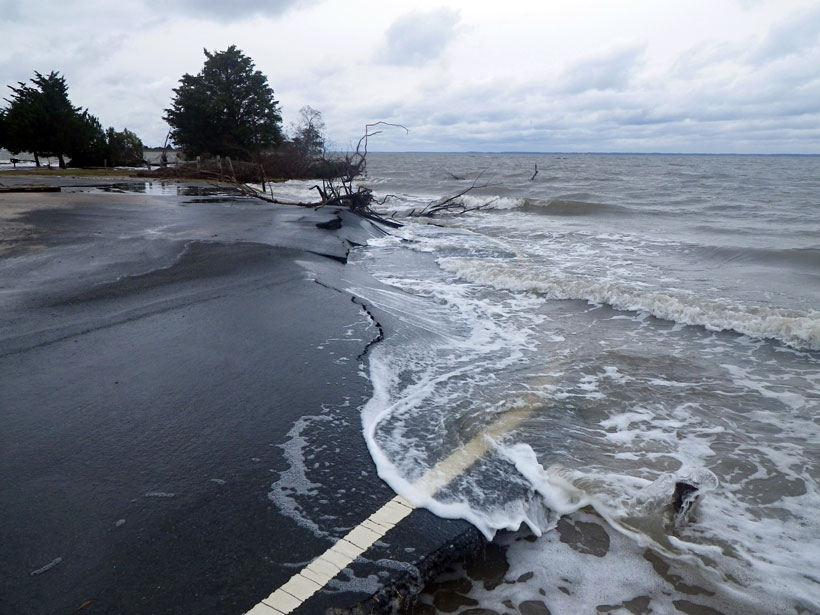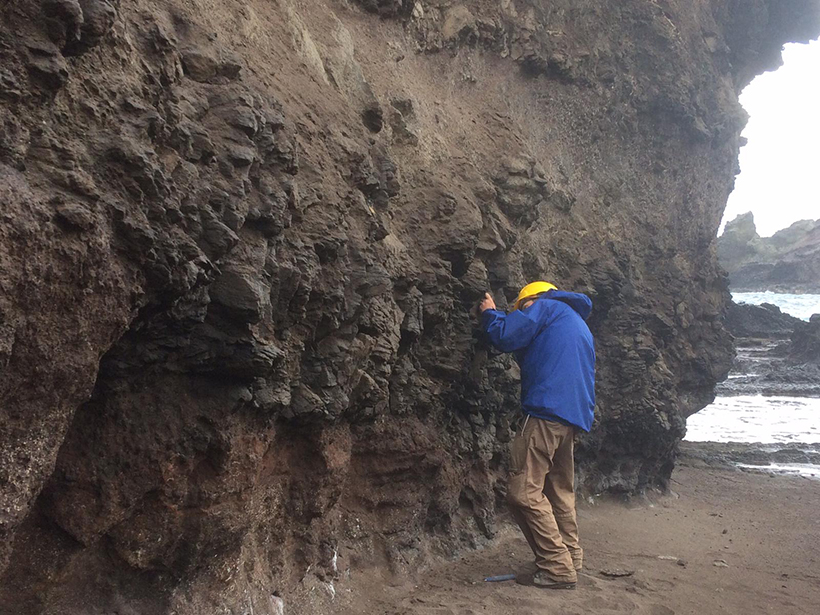The magnetic record stored in rocks documents the liquid core’s behavior and possibly when the inner core formed. Whether it formed half a billion or more than a billion years ago, however, is up for debate.
Earth’s core
Earth’s Wobbly Inner Core Illuminated by Nuclear Explosions
Shock waves from Cold War era nuclear tests gave seismologists a glimpse of the inner core. Its wobbly rotation could explain phenomena such as the periodic change in the length of a day.
Is Earth’s Core Rusting?
If subduction carries hydrous minerals deep into Earth’s mantle, they may “rust” the iron outer core, forming vast sinks of oxygen that can later be returned to the atmosphere.
New Results Deepen the Mystery of Earth’s Early Magnetic Field
How was Earth’s early magnetic field produced? New experimental results and modeling show that the energy source could not have come from exsolution of lithophile elements from the core.
Observation of Shear Wave Anisotropy in the Earth’s Inner Core
Coda-correlation wavefields reveal direction-dependent inner-core shear-wave speed, ~5 s faster in directions oblique to the Earth’s rotation axis than directions parallel to the equatorial plane.
Can NASA’s Gravity Satellites Detect Motions in Earth’s Core?
Measurements of our planet’s gravitational field could expose processes in the fluid outer core—if scientists can decipher the signals.
Long-Term Sea Level Cycle Affects Predictions of Future Rise
New research confirms the existence of a regular, long-term fluctuation in sea level, perhaps caused by processes in Earth’s core.
How Geodynamo Models Churn the Outer Core
New simulations of Earth’s outer core have reproduced magnetic fields that—for the first time—match paleomagnetic data collected from rocks.
A Robust Proxy for Geomagnetic Reversal Rates in Deep Time
The strength of Earth’s magnetic field in the distant past can tell scientists whether the planet’s magnetic poles were steady or prone to frequent reversals.





![Figure 2 from Wang and Tkalčić [2021]](https://eos.org/wp-content/uploads/2022/01/2021GL094784-Figure-2-sized-1200x675-1.png)




